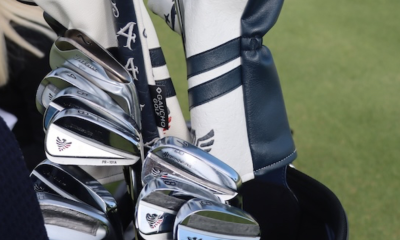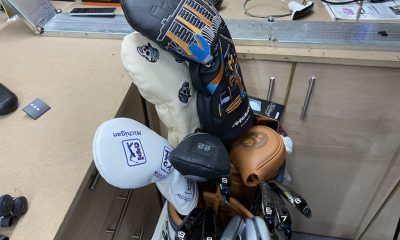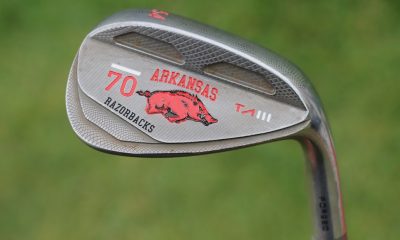19th Hole
PGA Tour rookie Tom Whitney’s previous job? Working 24-hour shifts as a Nuclear Missile Operator in the Air Force
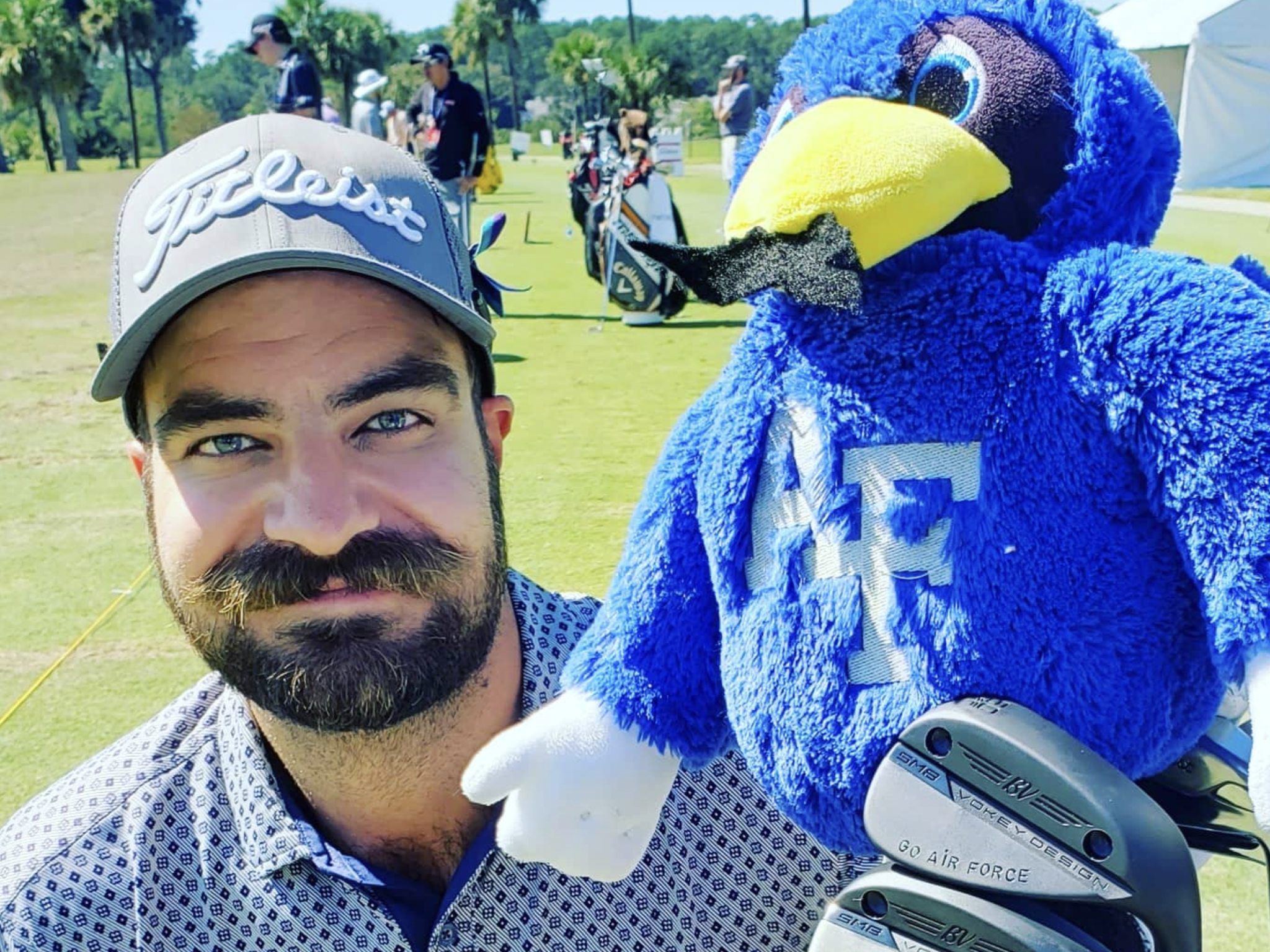
Thirty-four-year-old rookie, Tom Whitney, is making his first ever start as a PGA Tour member at this week’s American Express.
Whitney served in the Air Force as a Nuclear Missile Operator prior to becoming a professional golfer. At his pre-tournament press conference, he spoke about what that was like.
“Yes, a nuclear missile operator, 24-hour shifts with a crew partner, eight times a month. I think in total spent around 200 shifts underground by the time it was all said and done. Yeah, a lot of dull moments. It’s not a sexy job while you’re doing it, and at times it cannot even be very enjoyable, but I’ll tell you, it didn’t take very long after I separated and left that job and started golf full-time to where I missed it. I completely misgauged what I had, and you think the grass is literally greener as you’re entering the career of golf, and, man, I had it easy. People told me where I had to be, when I had to be there, what I had to wear, how long I had to be there for, what I was going to get paid. I pretty much knew what I was going to be fed. I mean, all the hard decisions were made for me. I just kind of had to follow a checklist.”
The veteran added that he’s not surprised anyone knows about his story.
“No, I’m not surprised anymore. I mean, I’ve been grinding away for almost 10 years now. I’ve put myself in the public spotlight or tried to get myself in that spotlight for 10 years. Yeah, there’s been a lot of fantastic writers that have written on my behalf and given a glimpse into what my life has looked like in the past, part of the Air Force and the journey afterwards with my wife and our four kids and being 34 as a rookie and, yeah, it’s cool that people get to know my background and how I got where I am.”
Whitney then went further into detail on his job requirements with the Air Force.
“Yes, I was a nuclear missile operator. That means me and a crew partner were positioned about a hundred feet underground in a personnel silo directly wired and attached to our nuclear missiles. So, we have three nuclear missile bases in the United States, one in Wyoming, one in Montana, one in North Dakota, and I was stationed in Cheyenne, Wyoming. Of those 150 missiles, myself and my crew partner would be in, primarily in charge of 10 of them.
You would show up to the base, let’s say on a Monday, and mission plan for two to three hours. You talk about expected weather, expected maintenance, maintenance that happens over the last 24-hour period, any intelligent, relevant intelligence threats or situations. Then just anything else that can overall affect your upcoming alert. Then you drive out to the site, which can be anywhere from 45 minutes to two and a half hours from the base. Everything’s spread out among Wyoming, Colorado, and Nebraska. So, it’s a good-sized field, or we call it the missile field. It’s about, the entire complex is about the size of Rhode Island. If you think about it, there’s 150 missiles, 15 personnel sites, and the base, and everything is hard wired underground. So, just the engineering and planning that went into it to install these pressure sensitive cables, and trenching all that to connect everything, it’s a really cool weapons system. So, you get out to the site, you go underground, and you transfer over with the previous crew, get briefed up on everything that happened. Then, once they’re gone, you have anywhere from an hour to three hours of just routine checklist items, going through all your daily test, inventorying everything. Then, it’s just whatever is scheduled for that specific alert.
Sometimes you have maintenance scheduled on one of the missiles, sometimes you have retargeting measures that all the crews have to send out, where we change the targets of where the missiles are aimed, based on current intelligence. Sometimes there’s just communications systems repairs or maintenance we have to accomplish. We respond to security situations. So, basically, we have like, I don’t know, 1,500 pages of technical data and, as missileers, we are trained to know how to prioritize what happens and where to look to follow the checklist. So, anything that happens to the missile goes through the missile crew, which I was a part of.
So, if maintenance is happening, a security response is happening, if a test, exercise, fire, underground shocks from an earthquake, whatever, we have to respond to, basically, we’re the go-between, between security, maintenance, and everything else. Ultimately, our main training part of the mission is we are the ones that launch the missile if the President sends the order. And it goes from the President to the USSTRATCOM, USSTRATCOM to us. So, there’s only one entity in between us and the President, if we are launching a nuclear missile.”
Whitney’s service to the United States of America changed his perspective on life.
“I mean, golf is just what I am currently doing, and I’m completely blessed to do it. But I could still be in the Air Force, at a place I don’t want to be. I could be in harm’s way. I could be fighting enemies. I’ve lost friends and loved ones in the armed forces. I have friends that are deployed. And I’m here in Palm Springs with two miles per hour wind, 75 degrees, getting paid to play these fantastic golf courses. Absolutely, I have a different perspective, because, you know, I signed up to basically saying I’m willing to give my life for this country, and never came anywhere close to that point.
But I mean, that’s kind of what you’re agreeing to when you join the military. Just understanding that, like, Man, there’s tough days out here, but in the grand scheme of things, I get to play golf for a living, I get to represent some awesome companies, I get to do what I love, and pretty much have control over my schedule and what I do day-to-day. So, yeah, it’s definitely fixed my perspective on life.”
The entire country will be rooting for Tom Whitney at the American Express this week and for the rest of the season. The Colorado resident is also set to compete at Torrey Pines for next week’s Farmers Invitational.
More from the 19th Hole
- Report: Viktor Hovland surprisingly splits with swing coach ahead of 2024 season
- Phil Mickelson urges fans not to ‘pile on’ Rory over latest LIV comments and calls for end to hostilities
- Brooks Koepka and Jena Sims lead golfers’ New Year celebrations with raunchy display
New here?
- LIKE20
- LEGIT1
- WOW0
- LOL2
- IDHT0
- FLOP0
- OB0
- SHANK1
19th Hole
Butch Harmon reveals what he worked on with Rory McIlroy during visit earlier this year

While speaking on the “Son of a Butch” Podcast, legendary swing coach Butch Harmon revealed what he worked on with Rory McIlroy when the four-time major champion went to visit him after the Players Championship this season.
Butch Harmon on what he worked on with Rory:
“The work I did with him wasn’t a tremendous amount of changing what he did, it was his attitude and the way he played certain shots. From 150 yards and in he made a full swing like he was hitting a driver and I wanted him to make…
— Matt Vincenzi (@MattVincenziPGA) May 15, 2024
“The work I did with him wasn’t a tremendous amount of changing what he did, it was his attitude and the way he played certain shots. From 150 yards and in he made a full swing like he was hitting a driver and I wanted him to make more 3 quarter swings and chop the follow through off a little. He’s a very high ball hitter, but with short irons high balls aren’t good, it’s hard to control, we wanted to bring the ball flight down.”
The work certainly seemed to help McIlroy, as he went on to win the Zurich Classic alongside Shane Lowry and the Wells Fargo Championship at Quail Hollow in back-to-back starts.
Rory will now tee it up at Valhalla for the PGA Championship, which is the site of his most recent major victory in 2014.
More from the 19th Hole
- Phil Mickelson drops big retirement hint; Says LIV will grow the game “on a much more global basis”
- 2-time major champ announces shock retirement from the sport at age of 33
- Tiger explains why golf has “negative connotations” for daughter Sam
New here?
- LIKE3
- LEGIT1
- WOW0
- LOL0
- IDHT0
- FLOP0
- OB0
- SHANK0
19th Hole
Brandel Chamblee says this technological development was key to Phil Mickelson winning major championships

While speaking with GolfWRX, Golf Channel’s Brandel Chamblee shared that he believes the solid core golf ball helped Phil Mickelson win major championships.
“One of the consequences of the solid core golf ball coming around was it put the straightest of hitters in the rough.
“Phil started winning majors in 2004, I don’t think that’s any coincidence. I think he started winning majors after the solid core golf ball came along and put everybody in the rough.
“And so [Phil] is like ‘I got you in the rough, I’m going to kick your a**. This is my game. I’ve been in the rough my whole career. I can go over trees, through trees, around trees.’
“Because he’s got that amazing creativity and Phil is an underrated iron player, phenomenal iron player. Great, great great out of the trouble. If you put the top-40 players on a list and ranked them in terms of accuracy, he would be 40th.
“So, I think that was one of the consequences of the solid core golf balls was it allowed Phil to win major championships.”
Mickelson went on to win the Masters in 2004 as well as five additional majors from 2004-2021 including three total Masters, two PGA Championships, and an Open Championship.
Check out the full interview with Chamblee below:
More from the 19th Hole
- Phil Mickelson drops big retirement hint; Says LIV will grow the game “on a much more global basis”
- 2-time major champ announces shock retirement from the sport at age of 33
- Tiger explains why golf has “negative connotations” for daughter Sam
New here?
- LIKE4
- LEGIT1
- WOW0
- LOL0
- IDHT0
- FLOP1
- OB0
- SHANK6
19th Hole
Former Augusta National employee pleads guilty to transporting stolen Masters memorabilia; Arnold Palmer’s green jacket among stolen items

The document was filed in the U.S. District Court for the Northern District of Illinois.
Since then, more details have emerged about the case.
According to Darren Rovell of Cllct, one of the items that was stolen was Arnold Palmer’s green jacket.
The Chicago Tribune also reported that Globensky was able to steal the merchandise due to his role as a former warehouse coordinator at Augusta National who oversaw the Masters merchandise that was sold.
Rovell states that “A source with intimate knowledge of the case said an Augusta National member, who knew the jacket was missing, contacted a well-known collector who had gained a reputation for tracking down rare items. The member’s goal was to return the jacket to Augusta under the guise of purchasing it in a private sale.”
The plan worked, and the man agreed to sell the jacket for an agreed upon price of $3.6 million. After the sale was complete, the FBI swarmed the house of the thief.
Cllct also reported that Globensky pled guilty in a federal court in Chicago on Wednesday and now faces up to 10 years in prison.
The Chicago Tribune adds that Globensky’s plea deal includes an agreement to provide the government a cashier’s check for $1.5 million in the next few days.
More from the 19th Hole
- Phil Mickelson drops big retirement hint; Says LIV will grow the game “on a much more global basis”
- 2-time major champ announces shock retirement from the sport at age of 33
- Tiger explains why golf has “negative connotations” for daughter Sam
New here?
- LIKE0
- LEGIT0
- WOW0
- LOL1
- IDHT0
- FLOP0
- OB0
- SHANK0
-

 19th Hole3 weeks ago
19th Hole3 weeks agoLET pro gives detailed financial breakdown of first week on tour…and the net result may shock you
-

 19th Hole1 week ago
19th Hole1 week agoReport: LIV star turns down PGA Championship invite due to ‘personal commitments’
-

 19th Hole2 weeks ago
19th Hole2 weeks agoGary Player claims this is what ‘completely ruined’ Tiger Woods’ career
-

 Equipment1 week ago
Equipment1 week agoDetails on Justin Thomas’ driver switch at the Wells Fargo Championship
-
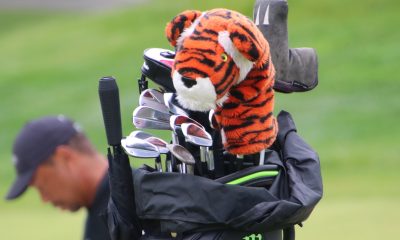
 Whats in the Bag2 days ago
Whats in the Bag2 days agoTiger Woods WITB 2024 (May)
-
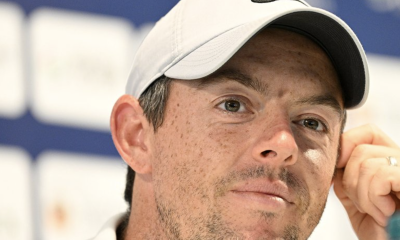
 19th Hole1 day ago
19th Hole1 day agoBrandel Chamblee says this is the primary reason why Rory McIlroy hasn’t won a major in 10 years
-

 Whats in the Bag3 weeks ago
Whats in the Bag3 weeks agoTeam McIlowry (Rory McIlroy, Shane Lowry) winning WITBs: 2024 Zurich Classic
-

 Whats in the Bag1 week ago
Whats in the Bag1 week agoKeegan Bradley WITB 2024 (May)













